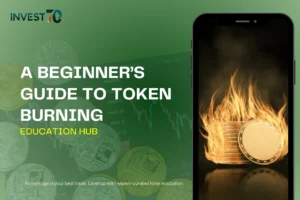DAOs for Beginners: What They Are and How to Join One
Summary
- Starting with the Big Picture
- DAOs for Beginners: From Experiment to Real Use
- DAOs for Beginners: How DAOs Operate
- DAOs for Beginners: Why People Join DAOs
- Table: Major DAO Categories and Examples (as of 2025)
- DAOs for Beginners: How to Join a DAO: Beginner’s Path
- Risks and Drawbacks to Consider
- Human Context: What It Feels Like Inside a DAO
- DAOs for Beginners: Looking Ahead
- Conclusion: DAOs for Beginners as an Entry to Web3 Collaboration
Starting with the Big Picture
DAOs for beginners can feel abstract until you see what they try to replace. Imagine a traditional company: a CEO at the top, managers below, then employees. Most decisions flow downward. Now imagine replacing that hierarchy with code, community voting, and shared rules written into a blockchain. That is the essence of a Decentralized Autonomous Organization (DAO).
Instead of executives, smart contracts run the basic operations. Instead of shareholders in a boardroom, members vote digitally using tokens. This makes DAOs part of a larger movement in crypto — a push to distribute control and reduce reliance on centralized authorities.
DAOs for Beginners: From Experiment to Real Use
The idea of DAOs first took shape in 2016 with “The DAO,” an ambitious but flawed attempt to create a decentralized venture fund. A major hack shut it down, but the core idea survived. Over the years, developers learned from those mistakes, and the DAO model spread across finance, culture, and even philanthropy.
By 2024, research platform DeepDAO reported that DAOs collectively managed over $30 billion in treasuries, showing that this concept is no longer a niche experiment. Thousands of members now participate in voting and governance across multiple sectors.
DAOs for Beginners: How DAOs Operate
Most DAOs share some common features:
- Smart contracts define the rules. These contracts live on a blockchain and automatically enforce decisions.
- Governance tokens give members the right to vote. One token may equal one vote, though systems vary.
- Treasuries hold pooled funds. Proposals decide how those funds are used.
- Community platforms (Discord, forums, Telegram) provide space for discussion before voting happens on-chain.
Because these elements are built into open blockchains, decisions and transactions remain visible to everyone. Transparency is a key reason people trust DAO structures.
DAOs for Beginners: Why People Join DAOs
Beginners often ask: why join a DAO instead of a regular online group? Several reasons stand out:
- Shared ownership: Members don’t just talk — they hold a stake in decisions.
- Borderless access: Anyone with an internet connection and tokens can participate.
- Direct participation: Instead of waiting for leaders, members vote directly.
- Diverse focus areas: DAOs exist for finance, art, gaming, social causes, and more.
For many, the appeal is being part of a collective experiment in governance — where voice and value are distributed more evenly.
Table: Major DAO Categories and Examples (as of 2025)
| Category | Example DAO | Blockchain | Key Purpose |
|---|---|---|---|
| DeFi (Finance) | MakerDAO | Ethereum | Oversees the DAI stablecoin |
| Exchange Governance | Uniswap DAO | Ethereum | Manages upgrades and fee structures |
| Social Communities | Friends With Benefits (FWB) | Ethereum | Token-gated membership for cultural projects |
| Naming Services | ENS DAO | Ethereum | Governs Ethereum Name Service |
| Investments/Treasury | BitDAO | Ethereum | Funds Web3 projects and maintains a large treasury |
DAOs for Beginners: How to Join a DAO: Beginner’s Path
Joining a DAO isn’t complicated, but it does involve a few steps:
- Choose a DAO carefully
Study its goals, track record, and treasury management. Look at how active the community is. - Set up a crypto wallet
A tool like MetaMask or WalletConnect is needed to hold governance tokens and interact with platforms. - Get tokens or membership access
Some DAOs require buying governance tokens; others may grant access through contributions or NFT-based passes. - Engage in discussions
Before voting, most DAOs encourage debate in online channels. Reading these discussions helps beginners learn the culture. - Participate in governance
With tokens in hand, you can vote on proposals or submit new ones if the DAO allows.
This process varies, but the essentials remain the same: wallet, tokens, community, governance.
Risks and Drawbacks to Consider
DAOs are still evolving, and beginners should understand the potential downsides:
- Code vulnerabilities: Bugs in smart contracts can be exploited, leading to lost funds.
- Voting concentration: Wealthy token holders can dominate decisions, undermining fairness.
- Legal ambiguity: Few jurisdictions recognize DAOs formally, leaving liability questions open.
- Community fatigue: Some DAOs suffer from low voter turnout or unclear decision-making.
These risks don’t mean DAOs are unworkable — but they highlight why beginners should approach carefully.
Human Context: What It Feels Like Inside a DAO
Joining a DAO is less like signing up for a company and more like stepping into a busy online forum that also has a treasury attached. Discussions can range from technical updates to cultural debates. Proposals are often public drafts, with community members suggesting edits before the formal vote.
For a newcomer, it can feel overwhelming at first. Yet many DAOs provide onboarding guides, mentorship programs, or “starter proposals” that allow smaller contributions before tackling larger governance issues.
DAOs for Beginners: Looking Ahead
Experts believe DAOs could reshape how online and offline communities operate. Some predict DAOs may one day manage cities, nonprofits, or even universities. While that remains speculative, the steady rise in treasury size and participation numbers shows growing momentum.
The real challenge is balancing efficiency with inclusivity. As more DAOs experiment with new voting models — quadratic voting, reputation-based systems, or delegation — the design space for collective governance continues to expand.
Conclusion: DAOs for Beginners as an Entry to Web3 Collaboration
DAOs for beginners offer a window into how blockchain can support new forms of organization. They are not just about finance but about experimenting with digital democracy, collective ownership, and transparent decision-making.
By learning how they work, weighing the risks, and gradually participating, anyone can become part of this emerging model. For those exploring Web3, DAOs for beginners provide both a challenge and an invitation — a chance to shape decisions in communities without borders.




